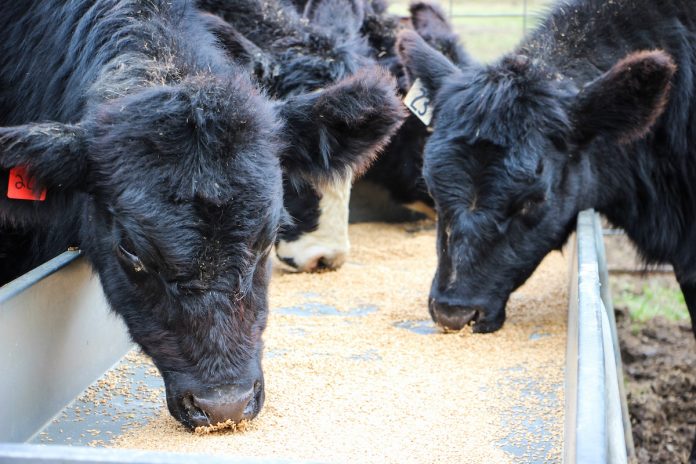Grazing livestock requires minerals to promote growth, milk production and several metabolic functions. How do we know that our mineral program is adequate to meet the needs of our grazing livestock?
In previous articles, we have stressed the importance of analyzing hay samples for winter feeding. But how many of us have sampled our pastures for nutrient content? We know that magnesium in early spring is important to prevent grass tetany, but what about the rest of the year?
Minerals are separated into two categories. Minerals that are needed in higher amounts are called major or macro minerals. These are listed on feed tags as a percentage and include calcium, phosphorus, chlorine, magnesium, potassium, sodium and sulfur. Minerals needed in lesser amounts are called minor or micro minerals which are copper, chromium, cobalt, iodine, iron, manganese, nickel, molybdenum, selenium and zinc. These minerals are often listed in parts per million (ppm).
Regardless of the type of mineral all are equally important for metabolic functions. A deficiency of any mineral can have major effects on animal health and performance regardless of the amount needed. The mineral requirement is dependent upon species, age, growth rate, stage of pregnancy and stage of lactation. Copper for example is recommended at much higher levels for cattle, horses and goats, but these levels would be toxic for sheep. Therefore, grazing sheep with another species, one must be cautious of what mineral mix is used.
There have been several studies conducted looking at pasture forages and their mineral content. Often the mineral levels are a reflection of soil fertility, but forage species will also be a contributing factor. In many of the studies, calcium levels were adequate, whereas very few fields had sufficient phosphorus to meet the animals’ requirements. Many of the other trace minerals were shown to be marginally deficient. In general, most minerals found in forages are considered to be only 50% available to the animal. Forages with high levels of iron, molybdenum and sulfur can have a strong antagonistic effect on copper absorption. Iron levels above 400 ppm and Molybdenum levels above 3 ppm are considered high enough to interfere with copper. Sulfur levels of more 0.25% of the daily dry matter intake from feed or water can reduce copper availability.
Mineral supplements are available in many different forms. Inorganic trace minerals can be an oxide, sulfate, chloride or a hydroxy form. Organic can be complexes, chelates, proteinates, polysaccharides or propionates. The bioavailability of each of these minerals is very different. The organic forms are absorbed most readily, followed by the hydroxy, carbonate, sulfate and finally the oxides. The only exception to this is magnesium oxide, which is bioavailable as an oxide. Typically, mineral mixes that are highly bioavailable are more expensive.
Vitamins in a mineral mix, especially an inorganic form, will lose their potency over time. Most recommendations are not to buy or mix more than what will be used within approximately 90 days. You may want to check with your supplier or manufacturer before purchasing.
Take the time to read the mineral product label. Look for intended species, mineral levels, feeding method, targeted intake and source of each mineral.
Taking the time to test your forages and matching them with a proper mineral mix can ensure good animal health and reproductive efficiency.













